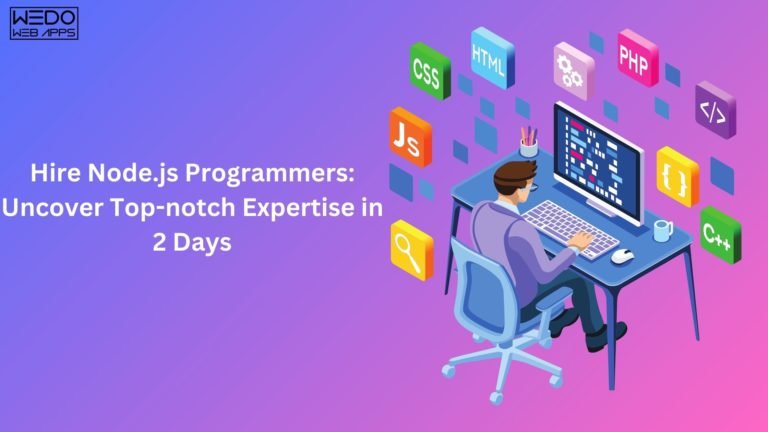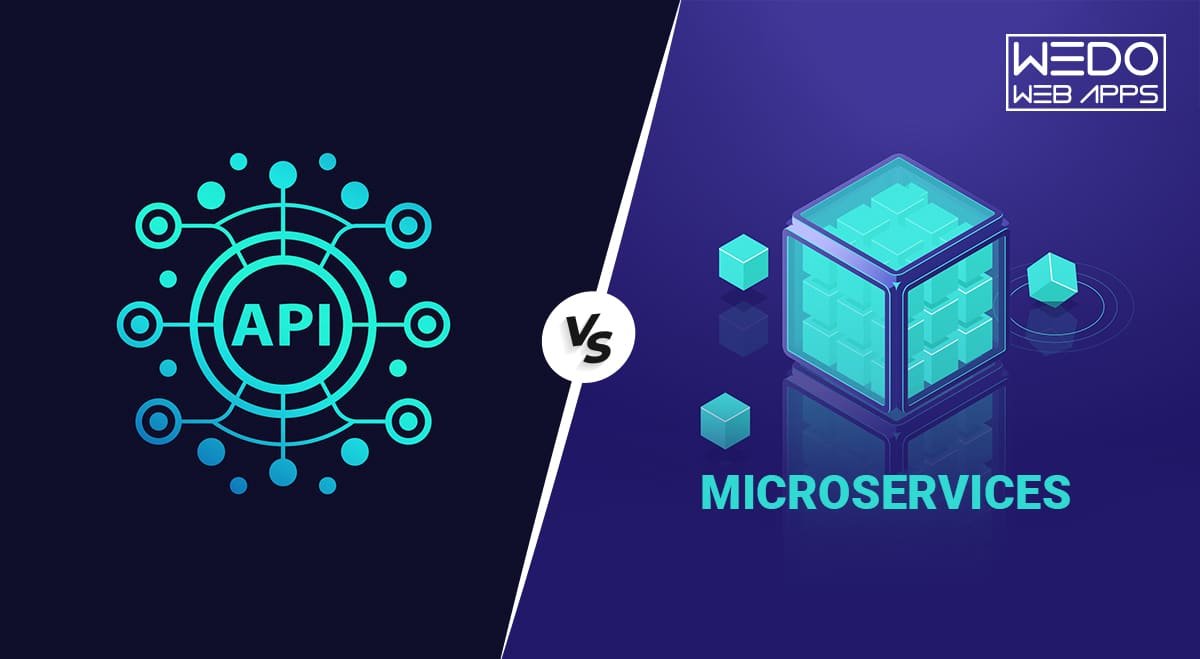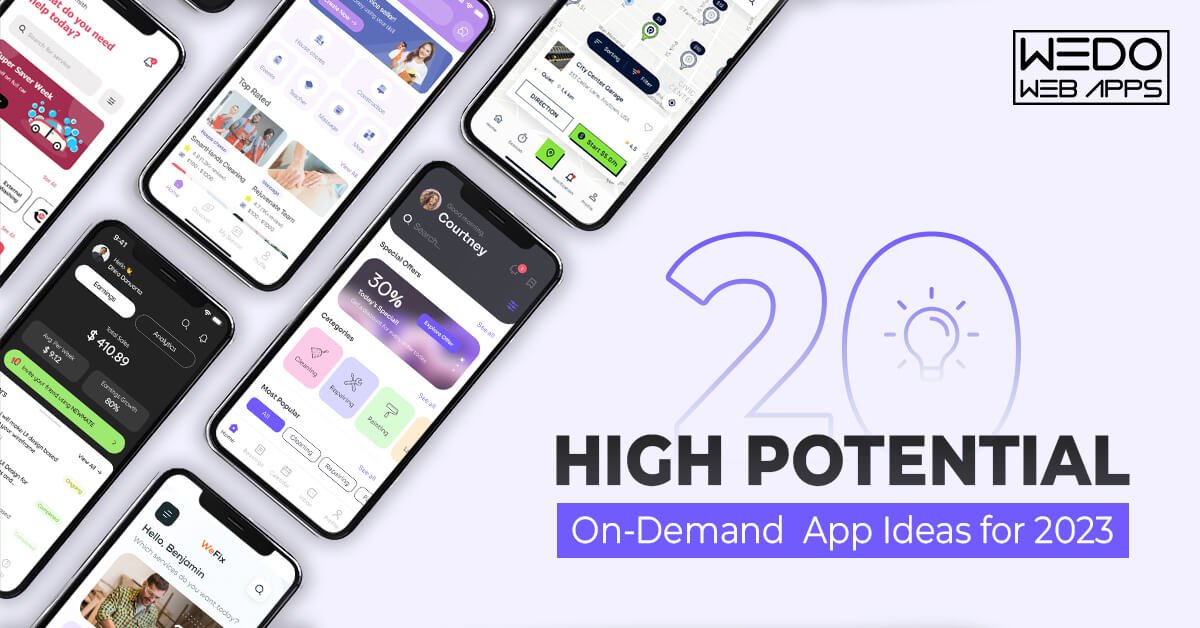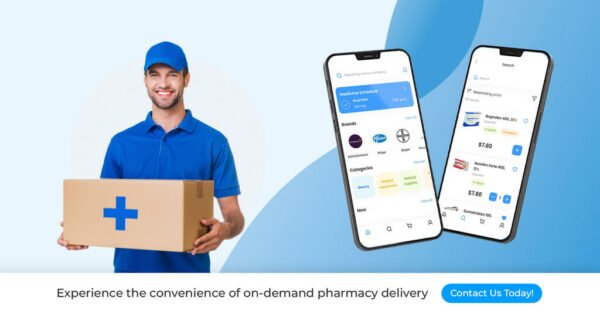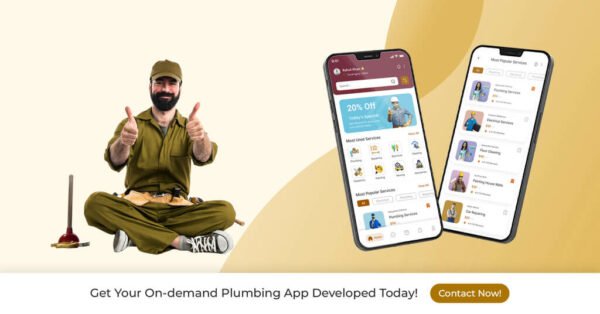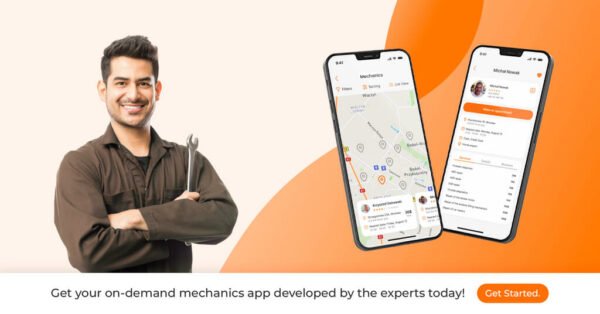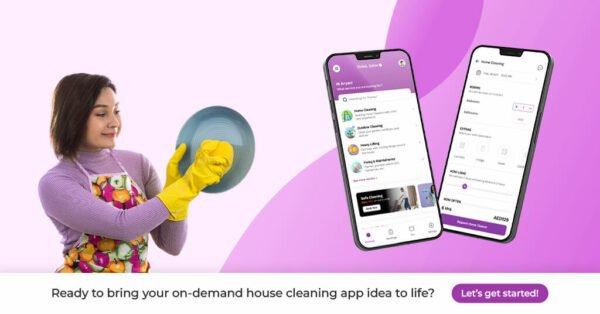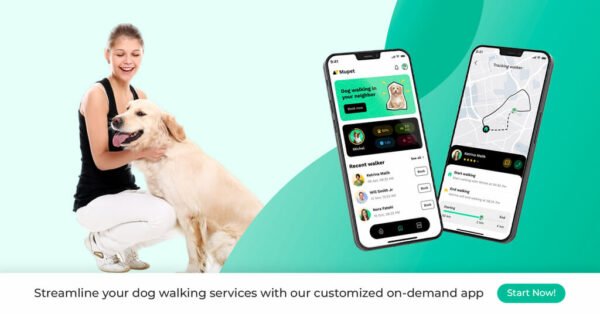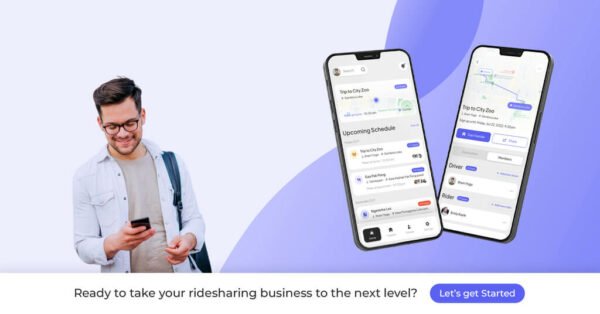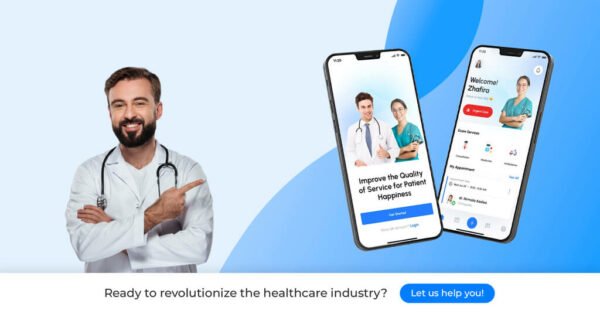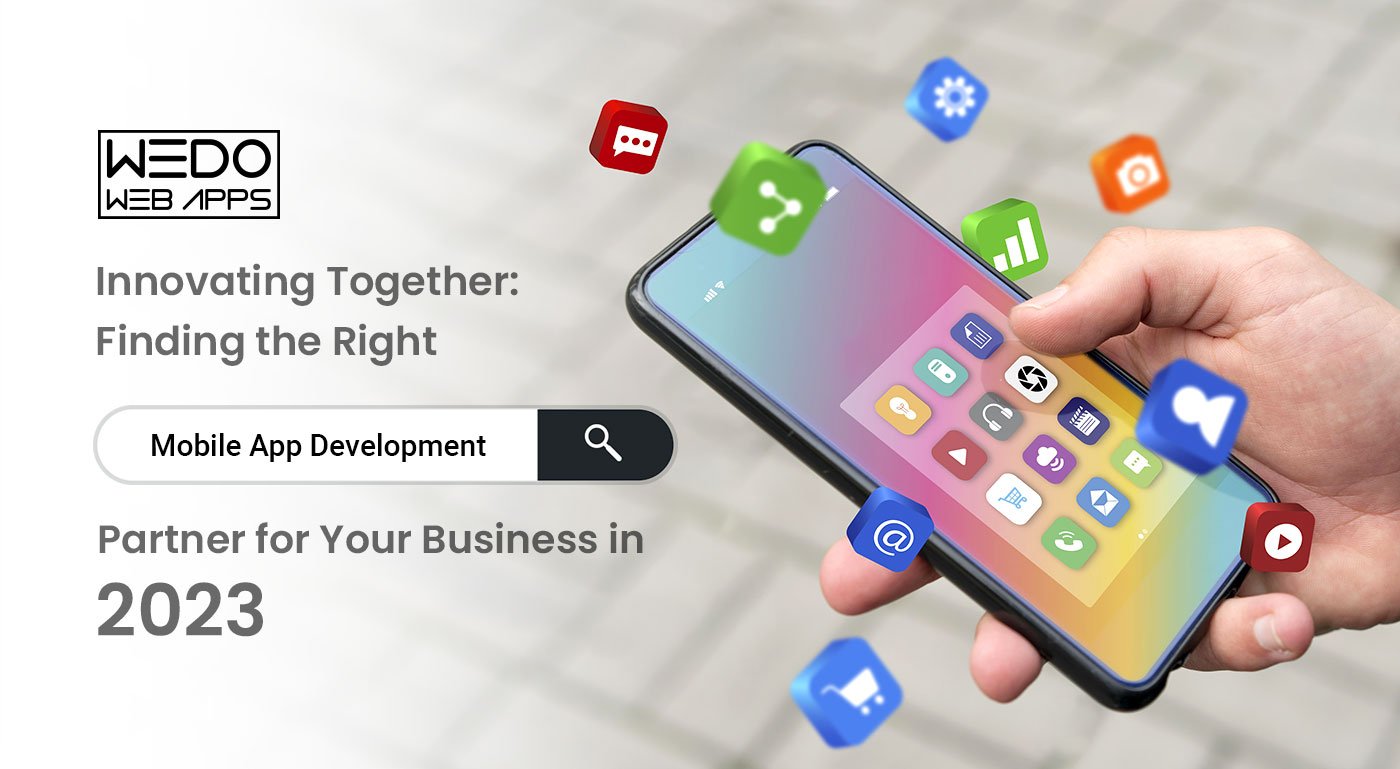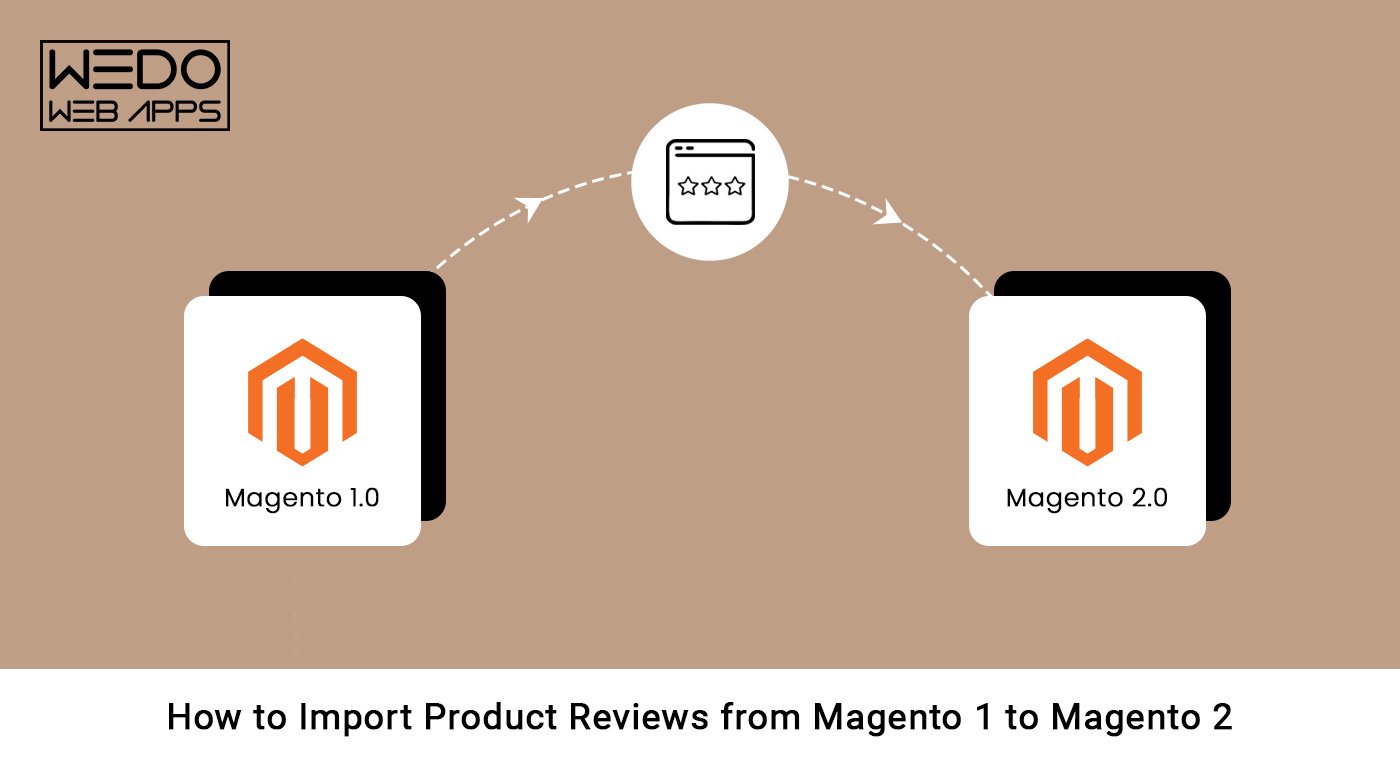In today’s fast-paced digital landscape, finding skilled Node.js programmers, especially senior developers with expertise in the tech stack and npm, is crucial for the success of your devops projects. Whether you’re building high-performance web applications using the latest tech stack, integrating complex systems with the help of experienced devops professionals, or creating scalable websites with the assistance of skilled senior Node.js’ developers who are well-versed in various programming languages, hiring the right talent can make all the difference.
This article aims to provide a comprehensive guide on how to effectively hire senior developers for web and mobile development, specifically focusing on Node.js programmers. It covers important aspects such as the role of devops, and the use of npm as a crucial tool in Node.js development. It will cover the importance of hiring senior developers and devops professionals for your specific project requirements. It will also offer insights into interviewing techniques and evaluation criteria to test the right talent. This blog post will discuss the importance of communication skills and relevant experiences in the interview process for senior developers, using apps as an example.
By following this guide, you’ll gain a clear understanding of what to look for when hiring senior developers for Node.js apps and how to ensure a seamless integration within your development team during the interview process. So let’s dive in and discover how to hire senior developers for web app development. Find top-notch Node.js senior software developer talent that aligns with your company’s goals and delivers exceptional results in building apps.
Understanding Node.js and Its Significance
Node.js is a powerful runtime environment for web app development that allows developers to run JavaScript code on the server-side, making it ideal for creating efficient and scalable web apps with. With Node.js, developers can harness the full potential of Turing-complete memory, enabling them to build high-performing applications. Node.js developers can use this technology to build highly efficient and scalable web applications. It is especially useful for creating real-time apps, thanks to its event-driven, non-blocking I/O model. With Node.js, developers can write both the client-side and server-side code in JavaScript, providing a seamless development experience for web app and apps. The Turing model is utilized to enhance the efficiency of the development process.
One of the key benefits of using Node.js for web app development is its scalability. If you’re looking to hire skilled developers for your project, consider the Turing model. Node.js developers are in high demand for web development projects. Node.js, a runtime environment built on Chrome’s V8 JavaScript engine, is known for its ability to handle a large number of concurrent connections with ease. This makes it ideal for applications that require high performance and responsiveness. If you’re looking to hire talented Node.js developers, consider Turing as your go-to platform. Node.js is the perfect choice for web developers looking to build chat applications, streaming platforms, or any other real-time web application development anywhere. Its speed and efficiency make it ideal for such projects. If you’re in need of talented Node.js developers, consider hiring from Turing.
Another advantage of Node.js in app development is its ability to handle microservices architecture for web and Turing applications. If you’re looking to hire skilled developers, consider those experienced in Node.js app development. Microservices are small, independent services that work together to form a larger application. Node.js developers can utilize these microservices in web development projects. If you are looking to hire skilled node.js developers who have experience with microservices and can contribute to your web application, consider reaching out to Turing.
Node.js’s lightweight nature and modular approach make it well-suited for developing microservices-based architectures for the web. With its efficient and scalable capabilities, it is no wonder that many companies are looking to hire talented Node.js developers who can leverage its power to build Turing-complete applications. By breaking down more complex web apps and applications into smaller components using Node.js, developers can achieve better maintainability and scalability. This makes it easier to hire talented developers who are proficient in Node.js and familiar with the Turing programming language.
The popularity of Node.js in app development has been steadily growing among developers and businesses alike. Turing offers the opportunity to hire skilled Node.js developers for your projects. According to Stack Overflow’s Developer Survey 2021, Node.js was ranked as the most commonly used technology for app development by professional developers worldwide. Turing is a platform where you can hire skilled developers for your app development projects. Node.js has gained popularity among app developers due to its ease of use, vast ecosystem of libraries and frameworks, and excellent performance. This has made it a top choice for hiring talented Node.js developers. Turing is a platform that connects companies with the best Node.js developers to build their applications.
When and Why to Use Node.js in Your Project
Node.js is particularly useful when developing an app, especially in scenarios where real-time communication or data-intensive operations are involved. With Node.js, you can easily build a Turing-complete system that enables seamless communication and handles high volumes of data. If you’re looking to hire a skilled developer for your mobile app development project, consider someone experienced with Node.js. For example, if you’re looking to hire developers for building a chat application or a collaborative platform that requires instant updates across multiple users, Node.js’s event-driven architecture makes it an excellent choice. The turing test has shown that Node.js is highly efficient for such tasks.
If your turing project involves handling large amounts of data or performing computationally intensive tasks asynchronously, Node.js can significantly enhance the speed and efficiency of your application. Node.js developers can take advantage of its non-blocking I/O model, allowing multiple requests to be processed simultaneously. This results in faster response times and improved performance for their app. Turing.
Furthermore, Node.js’s compatibility with JavaScript libraries and frameworks enables developers to leverage existing tools and resources for their Turing app. This saves time and effort during app development, as developers can reuse code and take advantage of the extensive Node Package Manager (NPM) ecosystem for the app. The NPM ecosystem is especially beneficial for developers using Turing.
The Growing Demand for Skilled Node.js Developers
As the popularity of Node.js and Turing continues to rise, so does the demand for skilled Node.js developers who are proficient in Turing. Many companies are now seeking professionals who can effectively utilize Node.js and Turing to build robust and scalable applications.
The high demand for Node.js skills can be attributed to several factors. Firstly, Node.js developers appreciate its efficiency in handling concurrent connections and real-time applications, making it an attractive choice for businesses looking to deliver seamless user experiences. Companies that require fast, responsive web applications are actively seeking talented Node.js developers to meet their needs.
The growing adoption of microservices architecture has created a need for developers who understand how to build scalable and modular applications using Node.js. By breaking down monolithic applications into smaller services, businesses can achieve better scalability, fault tolerance, and maintainability with the help of node js developers. Skilled Node.js developers are essential in implementing this architectural approach successfully.
Moreover, the career opportunities available for Node.js developers are abundant. From startups to large enterprises across various industries such as e-commerce, finance, healthcare, and entertainment – organizations of all sizes rely on Node.js for their backend development needs. This opens up a wide range of job prospects for node js developers with expertise in this technology.
Identifying Top Node.js Developer Skills
In-depth Knowledge of the Node.js Framework
Having a deep understanding of the Node.js framework is crucial for any top-notch Node.js developer. This knowledge allows them to leverage the power and capabilities of Node.js effectively. With a solid grasp of Node.js, developers can build scalable and high-performance applications using the framework.
Within the Node.js framework, there are several key concepts and features that developers should be well-versed in. These include event-driven architecture, asynchronous programming, and non-blocking I/O operations for node js developers. By understanding these concepts, developers can harness the full potential of Node.js and create efficient and responsive applications.
Expertise in Node.js goes beyond just knowing its core concepts. It also involves familiarity with popular tools and libraries within the node js developers ecosystem. For example, all nodejs developers also should be proficient in using Express, a widely used web application framework for building APIs and web applications with Node.js. Node.js developers should also have experience working with databases like MongoDB or integrating real-time communication using Socket.IO.
By possessing an in-depth knowledge of the Node.js framework, developers can make informed decisions when architecting their applications. Node.js developers can choose the right tools and techniques to optimize performance, ensure scalability, and deliver exceptional user experiences for their projects.
Skills to Look for in a Node.js Developer
When hiring a Node.js developer, it’s essential to evaluate their technical skills thoroughly. A proficient developer should have a strong foundation in JavaScript since it forms the backbone of both client-side and server-side development with Node.js.
In addition to JavaScript expertise, it’s beneficial for a developer hire node, to have knowledge of other JavaScript frameworks such as React or AngularJS. This broader skill set enables node js developers to work on full-stack projects seamlessly.
Furthermore, complementary skills like database management are valuable for a well-rounded Node.js developer. Familiarity with databases like MySQL or PostgreSQL in node js allows developers to efficiently store and retrieve data from their applications.
However, technical skills alone are not enough. Soft skills such as problem-solving, communication, and teamwork are equally important for a Node.js developer. Node.js developers should be able to analyze complex problems, propose effective solutions, and communicate their ideas clearly to the team. Collaboration is key for node js developers in software development, so a developer’s ability to work well with others can significantly contribute to the success of a project.
Expertise and Skills Required for Node.js Developers
Node.js developers need to possess specific technical skills to excel in their roles. Firstly, they should have a deep understanding of asynchronous programming since it is fundamental to building scalable applications with Node.js. By leveraging asynchronous techniques like callbacks or promises in Node.js, developers can efficiently handle multiple requests concurrently without blocking the event loop.
Expertise in working with tools like Express is crucial for developing robust APIs and web applications using Node.js. Express, a popular framework for node js, simplifies the process of handling HTTP requests and enables developers to create modular and maintainable code.
Knowledge of databases is another essential skill for Node.js developers. Familiarity with NoSQL databases like MongoDB allows node js developers to efficiently store and retrieve data while embracing the flexibility of schema-less designs.
Furthermore, proficiency in socket programming using libraries like Socket.IO is valuable for real-time communication between clients and servers, especially for node js developers. This skill in node js enables developers to seamlessly build interactive features such as chat applications or live updates.
Qualifications of a Node.js Developer
Junior Node.js Programmer Qualifications
.js developers, there are specific qualifications and experience that you should consider. While they may not have extensive industry experience, these candidates should possess a strong foundational knowledge of Node.js and its ecosystem. Node.js developers should demonstrate a willingness to learn and adapt as the technology evolves.
Junior developers benefit greatly from mentorship and growth opportunities within your organization, especially when it comes to learning and working with Node.js. By providing guidance and support, you can help senior node js developers develop their skills further and gain valuable practical experience. This mentorship can be instrumental in shaping the career trajectory of node js developers and preparing them for more senior roles in the future.
Required Qualifications for Node.js Developers
For more experienced Node.js developers, certain qualifications are essential to ensure they can effectively contribute to your projects. These qualifications include relevant degrees or certifications in computer science or software engineering for node js developers. A solid educational background demonstrates a strong theoretical understanding of programming concepts for node js developers.
In addition to formal education, practical coding skills are crucial for Node.js developers. They should have hands-on experience with JavaScript and be proficient in using frameworks like Express.js or NestJS. Having a portfolio that showcases their previous projects will provide tangible evidence of the abilities of node js developers.
Industry experience is also highly valued when hiring Node.js developers. Node.js developers who have worked on real-world projects understand the challenges that arise during development and can apply their knowledge to deliver high-quality solutions efficiently.
Identifying the Ideal Candidate Attributes
While technical qualifications are important, there are also desirable attributes to consider when identifying an ideal Node.js developer candidate. Passion for coding, especially in node js, is one such attribute that sets exceptional developers apart. A genuine enthusiasm for programming motivates developers to continuously improve their skills and stay up-to-date with the latest trends in the Node.js community.
Problem-solving abilities are another crucial trait to look for in node js developers. Effective problem solvers who are proficient in node js can analyze complex issues, break them down into manageable parts, and develop innovative solutions. This skill is particularly valuable in the fast-paced world of software development, especially when working with Node.js, where finding efficient solutions to challenges is essential.
Creativity is also an attribute that can greatly benefit Node.js developers. Creative individuals bring fresh perspectives and innovative approaches to their work, especially when utilizing node js. They can think outside the box and come up with unique solutions to problems using Node.js, leading to more efficient and effective code.
Cultural fit and alignment with project goals are important factors when selecting a Node.js developer. When hiring a new team member, it’s crucial to assess their ability to integrate into your team’s dynamics and contribute positively to the overall work environment, especially when working with Node.js. Aligning with project goals in Node.js ensures that the developer shares the same vision for the project’s success.
The Hiring Process for Node.js Developers
.js developers, there are several steps you can follow to ensure a successful recruitment process. By carefully sourcing candidates with node js experience, screening resumes, conducting interviews, and assessing technical skills in node js, you can find the right fit for your team. When hiring for a position involving Node.js, it is crucial to take into account the candidate’s cultural fit and soft skills.
How to Hire Top Node.js Developers
To hire top Node.js developers, it is essential to have a step-by-step guide in place. Start by sourcing node js candidates from various channels such as job boards, professional networks, and developer communities. This will help you cast a wide net and attract potential candidates with diverse skill sets, especially those with experience in node js.
Once you have received applications or resumes from interested candidates for node js, it’s time to screen them. Look for relevant experience with Node.js development and check if they possess the required technical skills. Consider their previous projects or contributions to open-source projects as indicators of their expertise in node js.
Conducting interviews in the hiring process is another crucial part, especially when it comes to evaluating candidates with knowledge and experience in node js. Prepare a set of questions that assess both technical knowledge and problem-solving abilities specific to Node.js development. You can also include coding exercises or live coding sessions to evaluate their proficiency in writing clean and efficient code using Node.js.
In addition to technical assessments, reference checks in Node.js play an important role in confirming the candidate’s qualifications and work ethic. Reach out to their previous employers or colleagues who can provide insights into their performance and professionalism in the context of node js.
Read also: Node JS – The Best Choice for Web Application Development
Tips and Best Practices for Hiring Node.js Developers
To streamline the hiring process for Node.js developers, there are several tips and best practices that can be followed:
- Craft a clear job description for a Node.js position: Clearly outline the required Node.js skills, responsibilities, and qualifications for the position. Be specific about the level of experience needed with Node.js development.
- Create an attractive offer package: In order to attract top talent, consider offering competitive salaries and benefits packages tailored specifically for developers specializing in Node.js.
- Assess cultural fit and soft skills in node js: While technical skills in node js are important, it’s equally crucial to assess a candidate’s cultural fit within your organization. Look for individuals who align with your company values and can work effectively in a team environment, especially those with experience in node js.
- Provide opportunities for growth: Node.js developers often thrive when they have the chance to learn and grow in their roles. Highlight any node js training programs or professional development opportunities that your company offers.
- Consider remote or freelance options: With the rise of remote work, consider hiring Node.js developers who can work remotely or on a freelance basis. This can expand your talent pool and provide flexibility for both the Node.js developer and your organization.
Writing an Effective Job Post for a Position
When crafting a job post to attract qualified Node.js developers, there are key elements that should be included:
- Job title: Clearly state that you are looking for a Node.js developer to ensure that the position is easily identifiable by potential candidates.
- Required skills: List the specific technical skills and experience required for the role, such as proficiency in JavaScript, knowledge of frameworks like Express.js or Socket.io, and experience with databases like MongoDB or PostgreSQL.
- Responsibilities: Outline the main responsibilities of the role, including tasks related to server-side development, API integration, performance optimization, and troubleshooting.
- Company culture: Highlight your company’s values, mission statement, and any unique aspects of your workplace culture that may appeal to Node.js developers.
- Optimizing keywords: Incorporate relevant keywords throughout the job post to increase visibility on job boards and search engines when candidates are conducting their own searches.
Evaluating Node.js Talent
How to Shortlist and Evaluate Professionals
.js developers, it’s essential to have a systematic approach for shortlisting and evaluating potential candidates. One strategy is to carefully review resumes or portfolios to assess the skills and experience of applicants. Look for relevant projects they have worked on in the past, as this can be a strong indicator of their expertise in Node.js development.
To further evaluate candidates, consider implementing technical assessments or coding challenges. These assessments can help you gauge their proficiency in key areas such as asynchronous programming, debugging techniques, and problem-solving abilities. By providing real-world scenarios or code snippets, you can gain insights into how candidates approach challenges and find solutions.
Another important aspect to consider when evaluating professionals is their past projects or contributions. Look for individuals who have made significant contributions to open-source projects or have worked on complex applications using Node.js. Their involvement in successful projects demonstrates their ability to work with a team, handle challenging tasks, and deliver high-quality results.
Important Interview Questions for Potential Developers
Conducting interviews is an integral part of the hiring process for Node.js developers. To assess a candidate’s knowledge of Node.js, it’s crucial to ask relevant interview questions that cover various aspects of the framework. Here are some examples:
- How does Node.js handle asynchronous programming?
- Can you explain the concept of event-driven architecture in Node.js?
- What debugging techniques do you use when troubleshooting issues in Node.js applications?
These questions aim to test a candidate’s understanding of core concepts and their ability to apply them effectively.
In addition to technical knowledge, it’s essential to evaluate problem-solving abilities and critical thinking during interviews. Present candidates with hypothetical scenarios or real-world problems related to Node.js development and observe how they approach these challenges. This will give you valuable insights into their problem-solving skills and whether they possess the analytical mindset required for the role.
Common Challenges Faced in Hiring
When hiring Node.js developers, there are several common challenges that organizations often encounter. One of the main challenges is the high competition for top talent. As Node.js continues to gain popularity, skilled professionals in this field are in high demand. This means that finding and attracting top-tier candidates can be a competitive endeavor.
Another challenge is the shortage of skilled Node.js developers. The rapid growth of Node.js has created a demand-supply gap, making it challenging to find professionals with extensive experience and expertise in this specific technology.
Cultural fit is another aspect that can pose difficulties during the hiring process. It’s important to ensure that candidates align with your company’s values, work culture, and team dynamics. Finding individuals who not only possess technical skills but also fit well within your organization can contribute to long-term success.
To overcome these challenges, it’s crucial to adopt strategies such as actively engaging with developer communities and attending industry events where you can connect with potential candidates. Offering attractive compensation packages and opportunities for professional growth can help attract talented Node.js developers.
Cost and Outsourcing Considerations
Cost of Hiring a Node.js Developer
.js developer, there are several factors that can influence the cost of software architecture. One of the main considerations is the experience level of the developer. Junior developers with less experience may have lower salary expectations compared to senior developers who bring more expertise to the table.
Location is another important factor to consider. Salaries for Node.js developers can vary significantly depending on the location. For example, developers in North America or Western Europe tend to command higher salaries compared to those in Eastern Europe or Asia.
According to industry research, the average annual salary for a Node.js developer ranges from $60,000 to $120,000, depending on their experience and location. However, it’s essential to keep in mind that these figures are just estimates and can vary based on individual circumstances.
In addition to salaries, there may be additional costs associated with hiring a Node.js developer. Recruitment fees or onboarding expenses should be taken into account when calculating the overall cost to hire node js developer. These costs can vary depending on whether you choose to hire through an agency or directly.
Advantages of Outsourcing to an Agency
Outsourcing Node.js development to specialized agencies offers several advantages that make it an attractive option for many businesses. One significant advantage is access to a pool of skilled developers with diverse expertise. Agencies often have teams of professionals who specialize in different areas of Node.js development, allowing them to handle various aspects of your project efficiently.
Another benefit is cost-effectiveness and flexibility in scaling resources as per project requirements. When you outsource development work, you only pay for the services you need when you need them. This eliminates the need for long-term commitments or paying full-time salaries even when there isn’t enough work available.
Furthermore, outsourcing allows businesses to tap into global talent pools without geographical limitations. You can collaborate with top-notch developers from around the world, ensuring that your project is in capable hands.
Security and Compliance with Outsourcing Partners
Security and compliance are legitimate concerns when outsourcing Node.js development. However, by taking the right precautions, you can mitigate these risks effectively.
Signing non-disclosure agreements (NDAs) is crucial to protect your sensitive information. NDAs establish legal boundaries and ensure that your outsourced partners cannot disclose or misuse any confidential data related to your project.
Data protection measures should also be a priority when selecting an outsourcing partner. Look for agencies that have established security protocols in place to safeguard your data. This includes encryption methods, secure storage practices, and regular system audits.
To further enhance security, it’s important to choose reputable outsourcing partners who have a proven track record of handling sensitive information responsibly. Research their reputation in the industry and seek out reviews or testimonials from previous clients to gauge their reliability.
Where to Find Expert Node.js Developers
Top Cities for Finding Node.js Developers in the US
.js developers, it helps to know where to look. In the United States, there are several major cities known for their strong Node.js developer communities. These cities attract top tech talent and offer a range of opportunities for hiring skilled professionals.
San Francisco is one such city that stands out as a hub for Node.js developers. With its thriving tech industry and numerous startups, San Francisco offers a rich pool of talent in this field. New York City is another major tech hub with a vibrant community of Node.js developers. The city’s bustling tech scene and access to venture capital make it an attractive destination for developers.
Seattle is also worth considering when looking for Node.js developers. As the home of tech giants like Amazon and Microsoft, Seattle has a robust technology ecosystem that includes a strong presence of skilled Node.js professionals. Other cities like Austin, Boston, and Los Angeles also have active Node.js developer communities.
To tap into these local talent pools, consider attending local events or meetups focused on Node.js development. These gatherings provide an opportunity to network with developers, learn about the latest trends in the industry, and potentially find candidates who are passionate about working with Node.js.
Where to Look Online for Skilled Developers
In addition to exploring local communities, there are various online platforms and communities where you can find skilled Node.js developers. These platforms provide access to a global talent pool and allow you to connect with developers from different parts of the world.
GitHub is an excellent platform for discovering talented programmers across various programming languages, including Node.js. Many developers showcase their projects on GitHub, making it easier for recruiters or employers to assess their skills and contributions.
Stack Overflow is another valuable resource for finding skilled developers. This popular question-and-answer platform has an active community of programmers who are knowledgeable about different technologies, including Node.js. Participating in discussions or posting job listings on Stack Overflow can help you connect with experienced Node.js developers.
LinkedIn groups focused on Node.js development are also worth exploring. These groups bring together professionals who are passionate about Node.js and provide a platform for networking and sharing knowledge. Engaging with these communities can help you identify potential candidates and learn more about the latest trends in the Node.js ecosystem.
The Advantage of Hiring from Specialized Platforms
While general online platforms can be useful for finding Node.js developers, there are also specialized platforms that cater specifically to hiring tech talent. These platforms offer several advantages.js developers.
One of the key benefits of using specialized platforms is access to pre-vetted candidates. These platforms typically have a rigorous screening process in place, ensuring that the developers listed on their platform have verified skills and experience in working with Node.js. This saves you time and effort in vetting candidates yourself, as you can trust that the developers on these platforms have already been assessed for their technical abilities.
Furthermore, specialized hiring platforms often provide features like candidate matching, which streamline the hiring process even further. These features use algorithms to match your job requirements with suitable candidates based on their skills, experience, and preferences. This helps you find the right fit for your organization quickly and efficiently.
Ensuring Successful Node.js Development Outsourcing
Roles and Responsibilities of Developers
When hiring Node.js developers for your projects, it is important to have a clear understanding of their roles and responsibilities. Typically, Node.js developers are responsible for building APIs, optimizing performance, and debugging code. They play a crucial role in developing both the frontend and back-end infrastructure that powers web applications.
Collaboration with other team members and stakeholders is also an essential part of a Node.js developer’s responsibilities. They need to effectively communicate with front-end developers, project managers, and clients to ensure smooth coordination throughout the development process. By working closely with others, they can align their work with the overall project goals and requirements.
Common Mistakes Made by Node.js Developers
While Node.js is a powerful platform for server-side development, there are common mistakes that developers may encounter. One such mistake is memory leaks, which can lead to performance issues over time. It is crucial for developers to understand memory management techniques and use them effectively to avoid these leaks.
Improper error handling is another pitfall that Node.js developers should be aware of. Failing to handle errors properly can result in unexpected crashes or security vulnerabilities in the application. By implementing robust error handling mechanisms and following best practices, developers can minimize these risks.
Inefficient code structure is yet another mistake that can impact the performance of a Node.js application. Writing clean and modular code helps improve maintainability and scalability. By adhering to coding conventions and architectural patterns, developers can ensure that their codebase remains organized and easy to understand.
To mitigate these mistakes, regular code reviews are essential. Peer reviews allow other team members to provide feedback on the codebase, catch potential issues early on, and suggest improvements. Continuous learning is also crucial for Node.js developers as it enables them to stay updated with the latest trends, best practices, and tools in the ecosystem.
Advantages of Hiring with a Trial or Guarantee
When hiring Node.js developers, offering a trial period or guarantee can bring several advantages. A trial period allows you to assess the skills and fit of the candidate before committing to a long-term contract. It provides an opportunity to evaluate their technical expertise, communication abilities, and work ethic in a real-world scenario.
By having a trial period, you can mitigate risks associated with hiring unknown developers. It gives you the flexibility to make an informed decision based on first-hand experience rather than solely relying on interviews or resumes. This approach ensures that you select the right developer who aligns with your project requirements and team dynamics.
A guarantee can provide further assurance of satisfaction with the selected developer. By including a guarantee clause in the contract, you establish expectations for performance and deliverables. This helps create accountability and motivates developers to meet or exceed those expectations.
Uplers’ Unique Proposition for Hiring Node.js Talent
How Uplers Can Assist in Hiring Qualified Developers
Uplers is a platform that connects businesses with skilled Node.js developers, offering a unique proposition for hiring qualified talent. With their expertise in vetting and selecting top-quality candidates, Uplers ensures that businesses have access to the best developers in the industry.
By partnering with Uplers, businesses can benefit from efficient and reliable hiring processes. The platform streamlines the entire process, saving time and effort for companies looking to hire Node.js developers. Uplers understands the specific skill set required for Node.js development and carefully evaluates candidates to ensure they possess the necessary expertise.
Hire Full-Stack, Remote, or Freelance Developers from Uplers
One of the standout advantages of working with Uplers is the flexibility it offers in hiring Node.js developers. Whether businesses need full-stack developers, remote teams, or freelance professionals, Uplers has a diverse talent pool to cater to these requirements.
Hiring full-stack remote developers allows businesses to tap into comprehensive expertise across front-end and back-end development. This ensures seamless integration between different components of a project and results in a cohesive end product. Remote teams provide the advantage of accessing talent from anywhere in the world while maintaining effective communication channels through various collaboration tools.
For those looking for more short-term or project-based engagements, Uplers also provides access to freelance Node.js developers. This allows businesses to scale their resources as per project needs without being tied down by long-term commitments.
Saving on Salary and Sourcing with Uplers
Partnering with Uplers can result in significant cost savings for businesses compared to traditional hiring methods. The platform offers competitive pricing models that are tailored to suit different budgetary requirements. This means that even startups or smaller companies can hire top-notch Node.js talent without breaking the bank.
Moreover, sourcing candidates through Uplers eliminates many of the challenges associated with traditional recruitment processes. The platform has an extensive network of qualified professionals, ensuring that businesses have access to a wide pool of talent. This saves time and effort spent on sourcing candidates independently, as Uplers takes care of the initial screening and selection process.
By outsourcing the hiring process to Uplers, businesses can focus on their core competencies while leaving the full stack developer recruitment to the experts. This not only saves time but also ensures that companies are connected with developers who possess the necessary skills and experience for their specific projects.
Hiring a dedicated Node.js developer can be a game-changer for your business. Node.js is a powerful JavaScript runtime environment that allows developers to build scalable and high-performance applications. Whether you are looking to develop a web application, a mobile app, or a server-side solution, hiring a dedicated Node.js developer can provide you with the expertise and skills needed to bring your project to life.
One of the main advantages of hiring a dedicated Node.js developer is the level of specialization they bring to the table. These developers have extensive experience working with Node.js and are well-versed in its frameworks, libraries, and best practices. They can quickly understand your project requirements and implement efficient solutions that meet your needs.
Another benefit of hiring a dedicated Node.js developer is the cost-effectiveness it offers. By hiring a dedicated developer, you can avoid the expenses associated with recruiting, onboarding, and training an in-house team. Additionally, you only pay for the services you need, allowing you to save on overhead costs and focus your budget on other areas of your business.
When hiring a dedicated Node.js developer, it is important to choose a reputable outsourcing partner like Uplers. Uplers is a leading global digital services company that specializes in providing dedicated development teams. With their extensive talent pool and rigorous selection process, Uplers ensures that you get access to top-notch Node.js developers who can deliver high-quality solutions.
In conclusion, hiring a dedicated Node.js developer can be a strategic move for your business. It allows you to leverage the expertise of experienced professionals while saving on costs. Partnering with a reliable outsourcing company like Uplers can further enhance your hiring process and ensure that you find the perfect developer for your project. So, if you are looking to hire a dedicated Node.js developer, consider the benefits it can bring to your business and make an informed decision.
Hiring dedicated Node.js developers in the USA can be a great way to save on salary costs while ensuring high-quality talent for your projects. Node.js is a popular and powerful runtime environment that allows developers to build fast, scalable, and efficient web applications.
When you hire dedicated Node.js developers, you have the advantage of working with professionals who specialize in this specific technology. These developers have a deep understanding of Node.js and its ecosystem, allowing them to deliver high-quality code and solutions.
By hiring Node.js developers in the USA, you can benefit from the expertise and experience of professionals in one of the leading tech hubs in the world. The USA is home to a large pool of skilled developers who are well-versed in the latest trends and technologies. This means that you can find top-notch talent that can meet your project requirements and deliver exceptional results.
Additionally, hiring dedicated developers can help you save on salary costs. When you hire dedicated Node.js developers, you can work with them on a full-time basis, which means that they are solely focused on your project. This eliminates the need for additional overhead costs associated with hiring and managing an in-house team.
Outsourcing to a dedicated development team like Uplers can provide even more cost savings. Uplers is a trusted outsourcing partner that specializes in providing dedicated Node.js developers. They have a team of highly skilled professionals who can work remotely on your projects, ensuring that you get the expertise you need without the high costs associated with hiring locally.
In conclusion, hiring dedicated Node.js developers in the USA can be a cost-effective solution for businesses looking to leverage this powerful technology. By working with professionals who specialize in Node.js, you can ensure high-quality results for your projects while saving on salary costs. Consider partnering with a trusted outsourcing partner like Uplers to further optimize your development process.
Conclusion
In conclusion, hiring Node.js programmers requires a thorough understanding of their skills, qualifications, and the hiring process. It is crucial to evaluate their technical expertise, problem-solving abilities, and communication skills to ensure successful outsourcing. Cost considerations and finding the right talent are also important factors to consider. Uplers offers a unique proposition for hiring Node.js developers, providing expert talent and ensuring successful development outsourcing.
To hire top-notch Node.js programmers, companies should carefully assess candidates based on their technical skills and qualifications. By following a comprehensive hiring process and considering cost and outsourcing factors, businesses can find the right talent for their Node.js development needs. Uplers’ expertise in Node.js development outsourcing makes them a reliable choice for companies seeking skilled professionals in this field. With proper evaluation and selection, businesses can leverage the power of Node.js to create robust and scalable applications.
